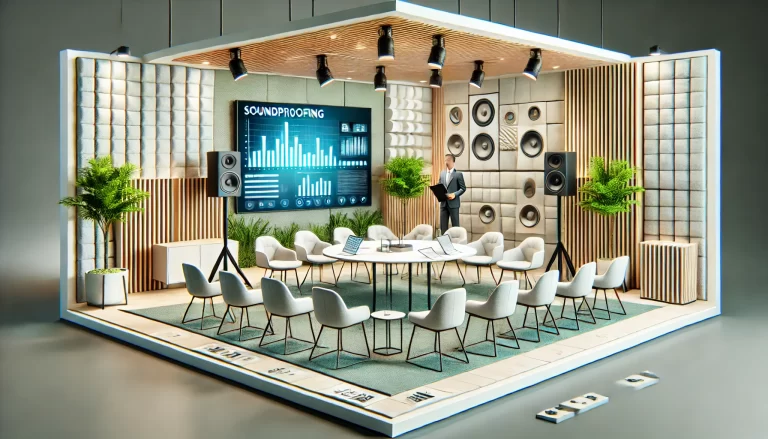
A well-designed conference room is more than just a place for meetings. It’s a space where ideas are exchanged, decisions are made, and collaborations are fostered. A significant factor that can impact the effectiveness of these interactions is the acoustics of the room. Poor acoustics can lead to misunderstandings, fatigue, and even headaches. In this article, we’ll explore some practical strategies to improve the acoustics in your conference room and create a more conducive environment for productive meetings.
Understanding Acoustics
Before we dive into solutions, it’s essential to understand the basics of acoustics. Sound waves travel through the air and bounce off surfaces. When these sound waves collide with hard, reflective surfaces like walls, floors, and ceilings, they can create echoes and reverberation. This can make it difficult to hear clearly and can lead to a sense of confusion and discomfort.
Assessing Your Conference Room
The first step in improving acoustics is to assess your current conference room. Consider the following factors:
Room size and shape:
Larger rooms with irregular shapes can be more challenging to acoustically treat.Existing materials:
The materials used for walls, floors, and ceilings can significantly impact sound absorption.Furniture and equipment:
The placement and type of furniture and equipment can also affect acoustics.
Effective Acoustic Treatments
Once you’ve assessed your room, you can implement various acoustic treatments to improve sound quality. Here are some effective strategies:
1. Sound Absorption:
- Acoustic panels: These panels are designed to absorb sound waves and reduce echoes. They can be installed on walls, ceilings, or even as freestanding dividers.
- Carpeting: Carpeting can help to absorb sound, especially low-frequency sounds.
- Soft furnishings: Curtains, draperies, and upholstered furniture can also contribute to sound absorption.
2. Sound Diffusion:
- Diffusers: Diffusers scatter sound waves in multiple directions, helping to prevent echoes and improve sound distribution.
- Textured surfaces: Walls with textured surfaces can also help to diffuse sound.
3. Noise Isolation:
- Soundproofing materials: If your conference room is located near noisy areas, consider using soundproofing materials like mass-loaded vinyl or acoustic insulation.
- Door and window seals: Ensure that doors and windows are properly sealed to prevent outside noise from entering.
4. Furniture and Equipment Placement:
- Strategic placement: Arrange furniture and equipment in a way that minimizes sound reflections and improves sound clarity.
- Avoid parallel surfaces: Try to avoid having parallel walls or surfaces, as this can create standing waves and echoes.
Ventilation and Airflow:
- Proper ventilation: Ensure that the conference room has adequate ventilation to maintain air quality and prevent noise buildup.
- Avoid drafts: Drafts can create turbulence and affect sound quality.
Additional Tips for Improved Acoustics
- Consider professional consultation: If you’re unsure about the best acoustic treatments for your conference room, consult with an acoustics expert.
- Regular maintenance: Periodically inspect and maintain acoustic treatments to ensure their effectiveness.
- Test and adjust: After implementing acoustic treatments, test the sound quality and make adjustments as needed.
By following these guidelines and implementing appropriate acoustic treatments, you can create a conference room that is conducive to productive meetings and fosters a positive work environment. A well-designed acoustic space will not only improve communication but also enhance the overall experience for meeting participants.